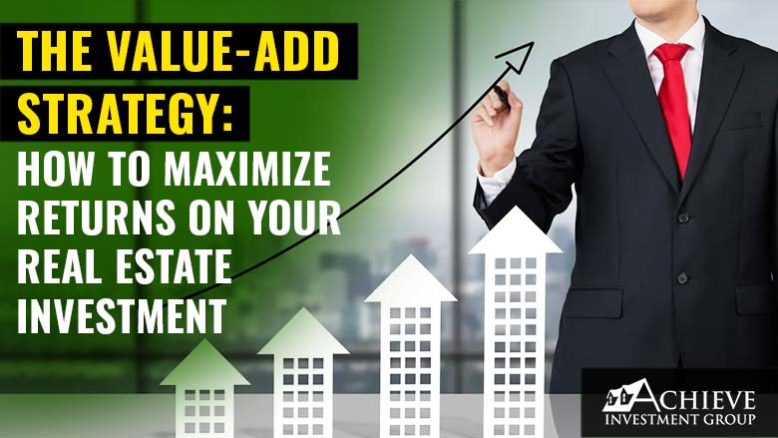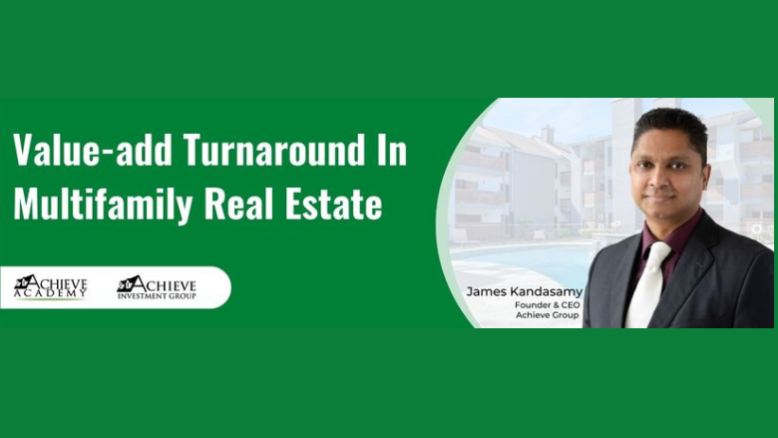The Value-Add Strategy: How to Maximize Returns on Your Real Estate Investment
Investing in real estate is a great way to build wealth, but it can be tricky. The key is to know where to invest and how much to pay. Value add properties are a great way to invest in real estate because they offer the potential for higher returns than other types of property. What is a Value Add Property? Value add refers to improving a property’s value through physical improvements and upgrades. In this sense, “add” does not mean increasing something’s size but rather it’s worth or value. Value-add homes are sometimes referred to as flip homes, fixer uppers, or teardowns, depending on the type of renovation needed. For example, if you buy a home for $100,000 and spend $20,000 on upgrades such as new appliances, updated paint colors, flooring, etc., you’ve added $20,000 worth of value to your property. Steps to Successful Value Add Property Here are a few steps to consider when investing in a value-add property: Identify the Opportunity: Look for properties that have the potential for increased income through rent increases, increased occupancy, or a change in use. Conversely, properties that are underperforming or underutilized are often good candidates for value-add investments. Conduct thorough Due Diligence: Before investing, it’s important to conduct a thorough due diligence process. This includes analyzing the property’s current financials, conducting a physical inspection, and reviewing the local real estate market. Create a Detailed Business Plan: Once you have identified a potential opportunity and have conducted due diligence, you will need to create a detailed business plan outlining the specific value-add initiatives you plan to undertake, the costs associated with those initiatives, and the projected returns on investment. Related: How to Add Value to Multifamily Properties Raise Capital: Value-add properties often require significant capital to fund the renovations or repositioning. Therefore, it’s important to have a solid plan to raise capital to fund the project. Implement the Plan: Once the funding is secured, it’s time to implement the plan and execute the value-add initiatives. This may involve renovating the property, repositioning it for a new use, or making other changes to increase its value. Manage and Monitor the Property: After the value-add initiatives have been completed, it’s important to manage and monitor the property to ensure that it performs as expected. This may involve adjusting the property’s operations, implementing new marketing strategies, or making other changes as needed. Characteristics of a Value Add Property Value-add properties are characterized by several key features that have the potential to increase in value through renovations, repositioning, or a change in the property’s use. Some of these characteristics include: Underperforming or underutilized: Value-add properties often need to be performing to their full potential. This could be due to poor management, lack of maintenance, or a change in the local real estate market. Potential for increased income: Value-add properties often have the potential to increase revenue through rent increases, increased occupancy, or a change in the property’s use. Potential for cost savings: Value-add properties may have opportunities to reduce operating costs through energy efficiency upgrades, building improvements, or other cost-saving measures. Potential for increased occupancy: Value-add properties may have the potential to increase occupancy through renovations, marketing, or a change in the property’s use. Location and demographics: Value-add properties may be located in areas with strong demographic trends, such as growing populations or increasing demand for certain properties. Construction and condition of the building: Properties that are older or in need of repairs and renovations are often good candidates for value-add investments. A change in use: A property currently used for a specific purpose may have the potential for a change in use. For example, a commercial building could be converted into residential units. The Bottom Line It’s important to note that a value-add property can be anything from a commercial building, an office building, an apartment complex, or a retail center. Each property is unique and requires a thorough analysis of the property’s current condition, local real estate market, and potential for increased income and cost savings. Therefore, a professional assessment of the property and the market is always recommended. Join Us For A Daily 60-second Coffee Break Series For Passive Investing In Commercial Real Estate With James Kandasamy, The Best-selling Real Estate Author And Mentor.


